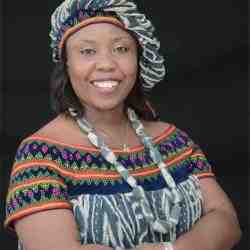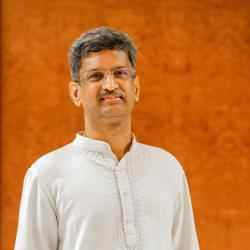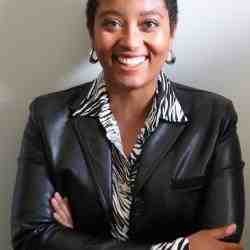Einführung
In hopes of providing youngsters in the slums with viable careers and greater self-esteem, Itamar Silva has created a new action plan through education tailored to their needs and in coordination with existing community-based initiatives.
Die neue Idee
In pockets of Rio de Janeiro wrought by poverty, violence, drug trafficking and an overall lack of optimism about the future, Itamar Silva's School without Walls offers recreational, social and skills-building opportunities to children in the slums, or favelas, aged eight through seventeen, who might otherwise be seduced by the lure of easy money associated with criminal activities. In Itamar's own words, "The School without Walls is a space for learning about life...a time of growth and positive affirmation of identity, citizenship, and culture." This program is of vital importance because public policy and many citizen organizations do not serve these young people in the favelas. Children and adolescents who can speak by and for themselves, who understand that they can intervene effectively in law practice, who establish a dialogue with youth from the city, discouraging them from violence and drug trafficking–all this requires people who are self-critical, who have developed their identity and autonomy and who proudly exercise their citizenship.The School without Walls not only enables the youngsters to learn and grow as individuals who appreciate their identities, but also prepares them to face society by providing them with appropriate social and work-related skills. For example, Itamar aims to teach his students the importance of both group teamwork and individual independence as conditions for citizenship.Other initiatives that have emerged from the community have had little potential to transform the favelas, due to the absence of links among them. The School Without Walls therefore acts as a wire transmitting connections among the various initiatives. However, Itamar's project also improves upon the current options for young people. Whereas other initiatives–citizen-based programs and government-sponsored services alike–do not offer viable leisure and work alternatives to young adults, the School Without Walls is structured to respond to the distinct needs and aspirations of its participants. It is at once motivational, educational and vocational, aiming to help the youngsters become the type of citizens who will be able to reach beyond the limitations of their birth and circumstances. Itamar explains, "The utopianism of the School without Walls is that the young people involved believe in their ability to learn and...have an understanding of how our society functions. If [one] has those components, [one] will be able to perform any job with dignity and expectations." This message has already been spread to eight favelas in Rio de Janeiro.
Das Problem
Although most adolescents of Santa Marta favela attend school, Itamar believes that "the problem today is not a matter of being or not being in school, but how the child is doing in school and what school the child attends." High quality public schools are scarce and many teachers leave their positions because of dissatisfaction with their salaries. Itamar explains, "Even if some teachers and school directors are diligent in their work, there is a political crisis that has been generating an emptying of the sick body of this institution. The result is a low yield of educated children and an alarming index of repetition and school flight."Furthermore, many students in the favelas are distracted by the need to work. Adolescents around the ages of thirteen and fourteen commonly leave school, claiming that they must work or help at home. The majority of those students return to study at the night courses offered by the schools, but almost always, by the time they are seventeen, they are one grade behind where they should be. A 1993 study carried out in Santa Marta revealed that 42 percent of local youth go to school by night and work by day, typically in supermarkets, at street fairs and at other low-paying jobs. Even of those who successfully complete high school, 55 percent end up working in the service sector and receive only minimal wages (US $100 per month). Admirably, many of these youth still hope to improve their chances for better and higher-paying positions. However, depressed economic conditions, as well as social and ethnic discrimination, seriously undermine the realization of these dreams. Since effort and determination, whether at school or work, do not automatically ensure that the youth will be able to meet their basic needs and fulfill their aspirations as adults, school becomes little more than a social experience. Moreover, favela youngsters are deprived of the cultural options that could complement the role of the schools and could provide opportunities for job training, art activities and other forms of income generation. Santa Marta favela, known for its location bordering several middle class neighborhoods, breeds frustration and violence. Youth there, as in other favelas of the city, are often attracted to criminal life as an escape from the hopelessness and lack of opportunity, and as a possible entrée into high-spending consumer culture. Drug trafficking becomes a road to power, influence, respect and authority, as well as violence. The favelas' youth are incorporating the everyday violence into their spare time, which can be seen in the funk parties with their aggressive music and common fights. When killings occur, police intervention reinforces the image of tragedy and callous disregard for human life. These events deflate youngsters' morale and instill a culture of mistrust, resentment and fear.
Die Strategie
To rebuild self-respect and make these youth capable of competing in a discouraging job market, the School Without Walls approaches learning from a different angle. In the School Without Walls, "we are all teachers and students," according to Itamar. He seeks out community leaders who have been inspired by his project and then, after participating in training at the school, they engage the youth in creative learning activities about the favela's social identity and history. These include theater activities and a local newsletter that circulates beyond the immediate community.Classes are defined as various activities that can last from six months to one year. Based on what the students have learned, each group then creates a final product that articulates their newfound sense of identity and worth, such as a theater performance, newspaper articles, a video or a debate. For example, one group is working in collaboration with the São Paulo Federal University to produce a written account of the Santa Marta favela. Itamar has stressed the importance of interviewing the favela youngsters in order to include their opinions and life perspectives in the project. In another course nineteen students learned to be professional computer maintenance technicians.In fact, Itamar frequently uses computers to draw students to his school. He has developed and started the "Computer Store-House" which provides professional computer training to youth between the ages of fourteen and twenty. Through computer training workshops and the sharing of information, the young adults learn the teamwork and technical skills needed to compete in the workplace. In a competition sponsored by the Brazilian governmental agency Community Solidarity, Computer Store-House was selected as a model program for income generation. Additionally, Itamar plans to develop a computer network that will enable the spread of awareness about favela culture, values and group memory. The network will also break down the ethnic and social barriers that divide favela neighborhoods from one another, and from outside communities. He intends to "overthrow the barriers that exist between favela and city youngsters, empowering both groups through relationships based on "mutual respect." While those in the favela live with the threat and stigma of crime, the youth of the city are condemned to live in closed condominiums. Both groups of youngsters badly need social companionship; Itamar initiates it through a dialogue that will transcend the stigma of violence and drug traffic.Itamar's strategy also involves promoting cohesion and strengthening the collective mission of favela-based citizen organizations. To achieve that goal, he is forging partnerships with groups such as Ecumenical Center of Action and Thinking, the Santa Marta Neighborhood Association and the Unity and Leisure Recreation Center at the Bento Rubião Center for the Defense of Human Rights. These partnerships center around three themes: citizenship, appreciation for favela values and culture and concern for favela youth. The School without Walls collaborates with partner institutions for project development and technical support. One outcome of his partnerships with the Viva Rio project and Social Agenda Rio 2004 has been community involvement in the reconstruction of an abandoned building close to Santa Marta. The building will be converted into a community cultural center.
Die Person
In 1955, Itamar's family settled in Santa Marta. As he describes, living in the favela in those days did not mean an end to one's happiness, but instead instilled a strong sense of belonging. Having lived in a home that was open to everyone, Itamar says that he learned early in life the meaning of the word "community," and the strength, identification and protection provided therein. In 1977, while in his second year of university and studying communications, Itamar found himself frustrated by his lack of involvement in community issues and decided that he wanted to do something that would have a positive impact on the favelas. He created the Eco newsletter to educate favela citizens about issues facing the community, such as unclean water, insufficient electricity and lack of sanitation. The newsletter became an important catalyst in the resurgence of the Neighborhood Association and led to Itamar's election as president of the Neighborhood Association for four years. During those years, living conditions in Santa Marta improved markedly, as did the reputation of the Neighborhood Association. Itamar is also in charge of the Eco Group, which for the past sixteen years has provided activities for favela youth during the summer holidays. Youngsters from the various neighborhoods inside Santa Marta participate in this community-wide program that links children and parents and provides fulfillment through working together. Itamar has also been active in a theater group, a computer school, leisure and sports activities, a research initiative to preserve the favela's history, collaborations with other favela communities, movements to defend human rights against police and drug-related violence and involvement with other citizen-based groups. As a result of his work in Santa Marta, Itamar took on the vice-presidency of the Bento Rubião Center for the Defense of Human Rights. At this Center, Itamar took charge of Union and Leisure Club activities in eight Rio de Janeiro favelas and developed the TV-Favela project, which consisted of video exhibitions, debates and technical training in videos for the youngsters. For this last initiative, Itamar was chosen as a MacArthur Fellow.In December of 1993, Itamar was invited to participate in the coordination of the Live Rio (Viva Rio) movement, which has increased in popularity since the Vigário Geral killings. Live Rio's objective is to rebuild the self-esteem of Rio de Janeiro citizens through active nonviolent attitudes.




